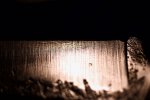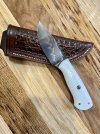- Joined
- Nov 14, 2021
- Messages
- 758
I generally like some of the brut du forge knives I've seen -- those that have a remnant of forge scale (enough to add some character). When I see a blade that's entirely covered in scale, it seems unfinished (which is the point I guess), but it also seems to have the potential to hide some serious flaws. Am I too worried about that? As a user and not a smith, I'd like to hear from those of you who actually forge blades, and from buyers who've actually used them.





